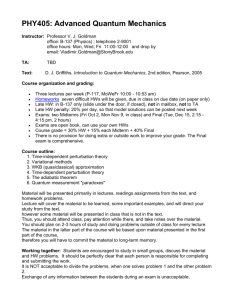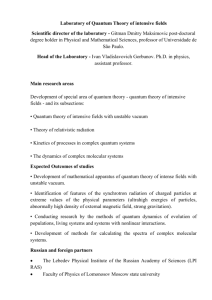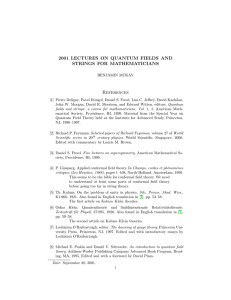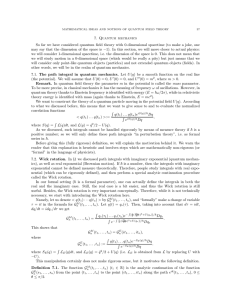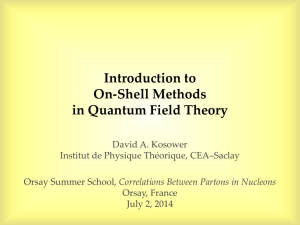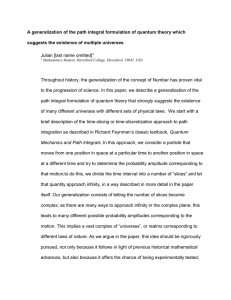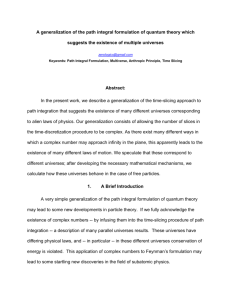Professor Giuseppe Nardelli
advertisement
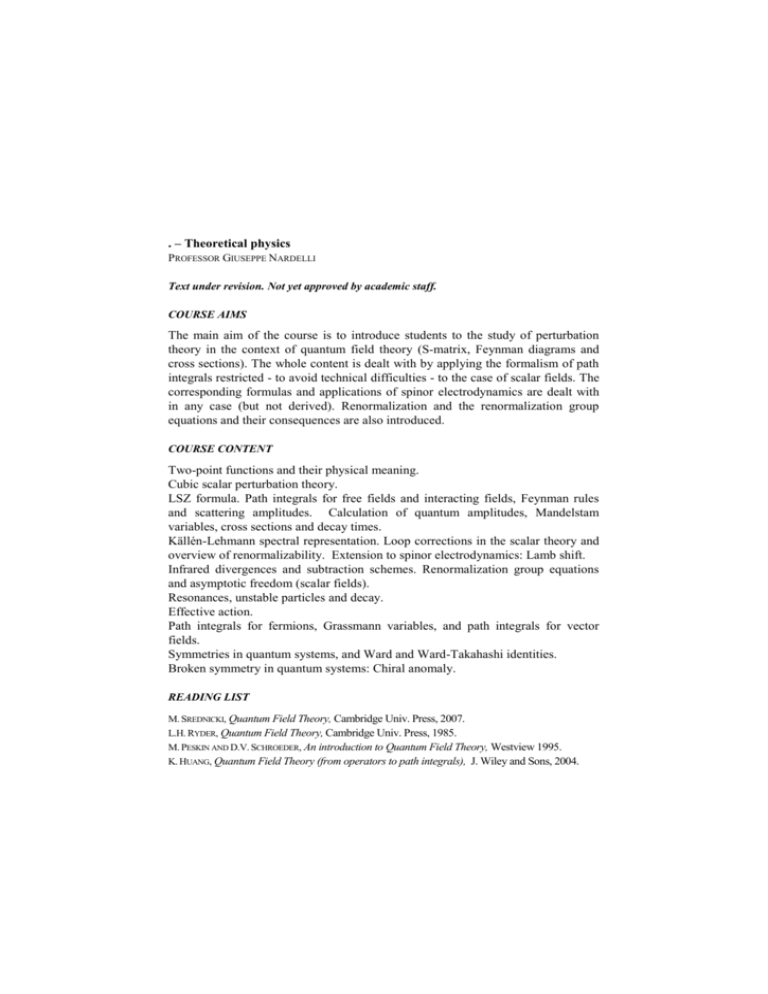
. – Theoretical physics PROFESSOR GIUSEPPE NARDELLI Text under revision. Not yet approved by academic staff. COURSE AIMS The main aim of the course is to introduce students to the study of perturbation theory in the context of quantum field theory (S-matrix, Feynman diagrams and cross sections). The whole content is dealt with by applying the formalism of path integrals restricted - to avoid technical difficulties - to the case of scalar fields. The corresponding formulas and applications of spinor electrodynamics are dealt with in any case (but not derived). Renormalization and the renormalization group equations and their consequences are also introduced. COURSE CONTENT Two-point functions and their physical meaning. Cubic scalar perturbation theory. LSZ formula. Path integrals for free fields and interacting fields, Feynman rules and scattering amplitudes. Calculation of quantum amplitudes, Mandelstam variables, cross sections and decay times. Källén-Lehmann spectral representation. Loop corrections in the scalar theory and overview of renormalizability. Extension to spinor electrodynamics: Lamb shift. Infrared divergences and subtraction schemes. Renormalization group equations and asymptotic freedom (scalar fields). Resonances, unstable particles and decay. Effective action. Path integrals for fermions, Grassmann variables, and path integrals for vector fields. Symmetries in quantum systems, and Ward and Ward-Takahashi identities. Broken symmetry in quantum systems: Chiral anomaly. READING LIST M. SREDNICKI, Quantum Field Theory, Cambridge Univ. Press, 2007. L.H. RYDER, Quantum Field Theory, Cambridge Univ. Press, 1985. M. PESKIN AND D.V. SCHROEDER, An introduction to Quantum Field Theory, Westview 1995. K. HUANG, Quantum Field Theory (from operators to path integrals), J. Wiley and Sons, 2004. TEACHING METHOD Lectures. ASSESSMENT METHOD Oral examination. NOTES Further information can be found on the lecturer's webpage http://www2.unicatt.it/unicattolica/docenti/index.html or on the Faculty notice board. at




